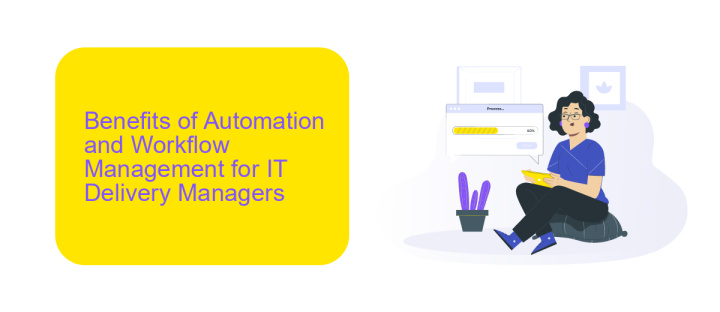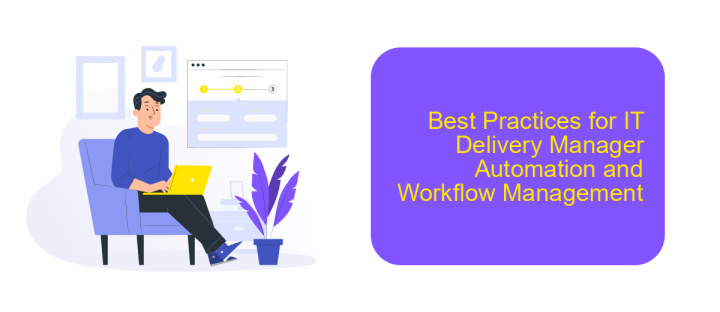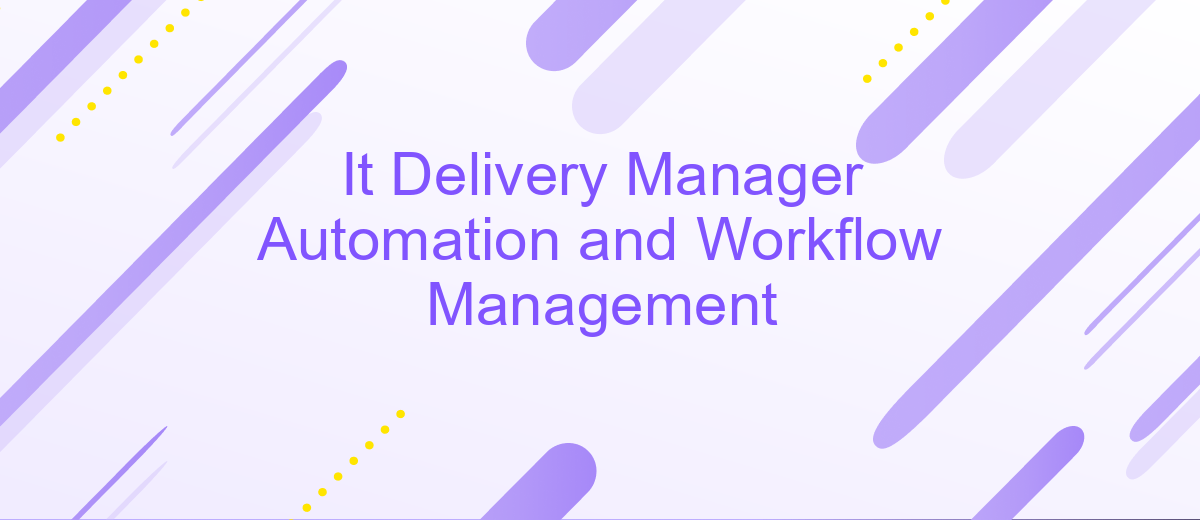It Delivery Manager Automation and Workflow Management
In today's fast-paced digital landscape, the role of an IT Delivery Manager has evolved significantly, emphasizing the importance of automation and workflow management. By leveraging advanced tools and methodologies, IT Delivery Managers can streamline processes, enhance productivity, and ensure seamless project execution. This article delves into the critical aspects of automation and workflow management, offering insights into how these practices are transforming IT delivery.
Introduction
In today's fast-paced digital landscape, the role of an IT Delivery Manager has evolved significantly. Automation and workflow management are now critical components for ensuring the seamless delivery of IT services. By leveraging these tools, organizations can streamline processes, reduce manual intervention, and improve overall efficiency.
- Enhanced productivity through automation
- Streamlined workflows for better efficiency
- Reduced operational costs
- Improved accuracy and reliability
One of the key services that facilitate integration and automation is ApiX-Drive. This platform allows IT Delivery Managers to connect various applications and automate workflows without requiring extensive coding skills. By using ApiX-Drive, organizations can easily integrate their systems, ensuring data consistency and operational harmony. This not only saves time but also minimizes the risk of errors, making it an invaluable tool in the modern IT landscape.
Benefits of Automation and Workflow Management for IT Delivery Managers

Automation and workflow management significantly enhance the efficiency and productivity of IT Delivery Managers. By automating repetitive tasks and streamlining processes, IT Delivery Managers can focus on strategic planning and decision-making. This not only reduces the time spent on manual operations but also minimizes the risk of human error, ensuring more accurate and reliable outcomes. Tools like ApiX-Drive facilitate seamless integration between various platforms and services, further simplifying the workflow and enabling better coordination among team members.
Moreover, automation and workflow management provide real-time insights and analytics, allowing IT Delivery Managers to monitor project progress and identify potential bottlenecks early. This proactive approach helps in timely resolution of issues, ensuring that projects stay on track and within budget. Enhanced visibility into workflows also fosters better communication and collaboration, as team members can easily access and share information. Overall, the adoption of automation and workflow management tools leads to a more agile, responsive, and efficient IT delivery process.
Key Considerations for Implementing Automation and Workflow Management

When considering the implementation of automation and workflow management, it is essential to focus on several key factors to ensure a smooth and efficient transition. Proper planning and execution can significantly enhance productivity and streamline operations.
- Assessment of Current Processes: Begin by thoroughly evaluating your existing workflows to identify bottlenecks and areas for improvement. Understanding the current state will help in designing a more efficient automated system.
- Integration Capabilities: Ensure that the automation tools you choose can seamlessly integrate with your existing systems. Services like ApiX-Drive can facilitate smooth integration, allowing for real-time data synchronization across various platforms.
- Scalability and Flexibility: Opt for solutions that can scale with your business growth and adapt to changing requirements. This will help in maintaining long-term efficiency and avoiding frequent overhauls.
- Employee Training: Invest in comprehensive training programs to ensure that your team is well-versed with the new automated processes. This will minimize resistance and enhance overall adoption.
- Continuous Monitoring and Improvement: Regularly monitor the performance of your automated workflows and make necessary adjustments. Continuous improvement is key to maintaining optimal efficiency.
Implementing automation and workflow management requires a strategic approach that considers both the technical and human aspects. By focusing on these key considerations, organizations can achieve a seamless transition and unlock the full potential of automation.
Best Practices for IT Delivery Manager Automation and Workflow Management

Effective IT delivery management relies heavily on automation and streamlined workflow management. To optimize these processes, it's crucial to implement best practices that enhance efficiency and reduce manual intervention. One of the key strategies is to leverage integration services like ApiX-Drive, which simplify the connection between various tools and platforms.
Automation should start with identifying repetitive tasks that can be streamlined. By automating routine processes, IT delivery managers can focus on strategic planning and problem-solving. It's also important to ensure that all team members are trained to use the automation tools effectively, fostering a culture of continuous improvement.
- Utilize integration platforms like ApiX-Drive for seamless tool connectivity.
- Automate repetitive and time-consuming tasks to free up resources.
- Train team members on the use of automation tools and best practices.
- Regularly review and update workflows to adapt to changing requirements.
By following these best practices, IT delivery managers can significantly enhance their workflow management and overall project efficiency. The use of integration services like ApiX-Drive can further streamline processes, ensuring that all tools work together harmoniously, thereby reducing the risk of errors and improving project outcomes.
Conclusion
In conclusion, the role of an IT Delivery Manager in automation and workflow management is crucial for the seamless execution of projects. By leveraging advanced tools and methodologies, they can streamline processes, enhance productivity, and ensure timely delivery. Automation reduces human error, saves time, and allows teams to focus on more strategic tasks, thereby driving overall efficiency. Effective workflow management, on the other hand, ensures that every step in the process is well-coordinated and aligned with the project's goals.
Moreover, integrating services like ApiX-Drive can further enhance these capabilities by providing a robust platform for seamless integration of various applications and tools. This not only simplifies the automation process but also ensures that data flows smoothly across different systems, reducing the need for manual intervention. As a result, IT Delivery Managers can achieve higher levels of operational excellence, making their organizations more agile and responsive to changing business needs.


FAQ
What is the role of an IT Delivery Manager in Automation and Workflow Management?
How can automation improve workflow management?
What are some common challenges faced in implementing automation?
How can ApiX-Drive assist in workflow automation?
What steps should be taken to ensure a smooth transition to automated workflows?
Time is the most valuable resource for business today. Almost half of it is wasted on routine tasks. Your employees are constantly forced to perform monotonous tasks that are difficult to classify as important and specialized. You can leave everything as it is by hiring additional employees, or you can automate most of the business processes using the ApiX-Drive online connector to get rid of unnecessary time and money expenses once and for all. The choice is yours!

